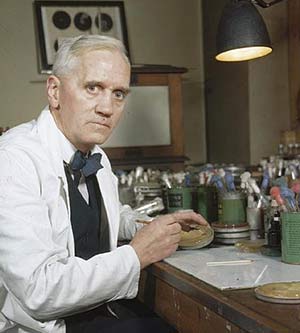
Sir Alexander Fleming
Decreased permeability
Beta-lactam antibiotics access their target on the organism’s inner plasma membrane through porin channels in the outer membrane as their hydrophilic characteristics make diffusion through the bilayer impossible. (5, 8)
Changes in the porin structure or their concentration in the outer membrane contribute to the beta-lactam resistance by reducing the amount of antibiotic available to bind to the target proteins. This mechanism is important in Escherichia coli, Proteus species, Pseudomonas aeruginosa, Acinetobacter baumannii, Shigella dysentariae, Neisseria gonorrhoeae, Serratia marcescens, and Helicobacter pylori.
Efflux
Bacteria can transport substrates out of the cell from the cytoplasmic or periplasmic space using efflux systems. These efflux systems are membrane proteins and they can be single component efflux systems (transfer their substrates across the cytoplasmic membrane) or multicomponent pumps (transfer substrates across the cell envelope). Efflux pumps can be specific to antibiotics however most of them are multidrug transporters significantly contributing to multi-drug resistance. (9)
In P. aeruginosa, the presence of multi-drug efflux pumps, together with beta-lactamases expression, and membrane permeability factors serve to protect this organism from several beta-lactam antibiotics. (8)
Target modification
As PBPs are the main target of beta-lactam antibiotics, modifications to this target sites will have an effect on the susceptibility of organisms to those antibiotics. PBPs can be over produced by bacteria and thus increase the MIC of the organism to a particular beta-lactam.
Most commonly, organisms express low-affinity PBPs resulting in beta-lactam resistance. Low affinity PBPs can be acquired through plasmids from other species (e.g. mecA genes in methicillin resistant Staphylococcus aureus); they can be a result of recombination of susceptible PBPs with a more resistant variety (e.g. N. gonorrhoeae and Streptococcus pneumoniae), or by point mutations in the native genes (e.g. Haemophilus influenzae, Enterococcus faecium). (2,5,8)




